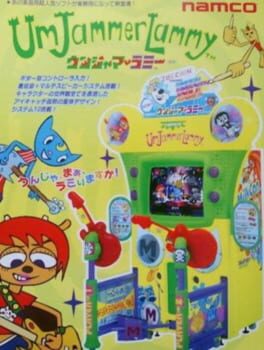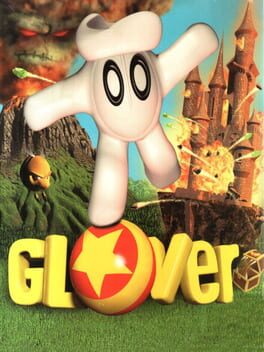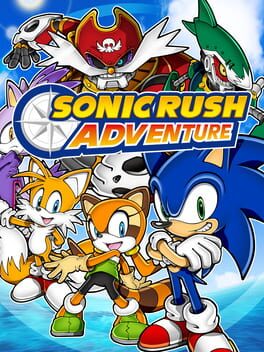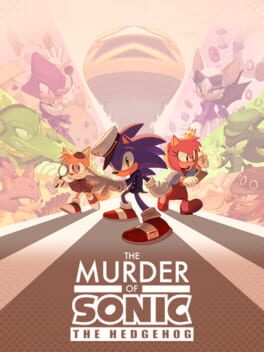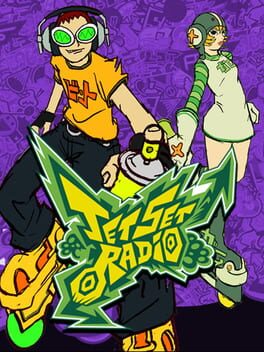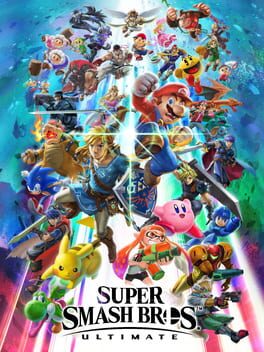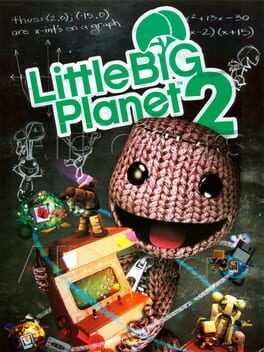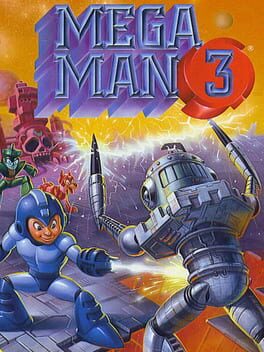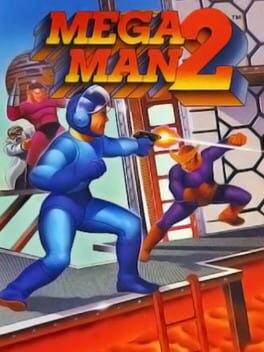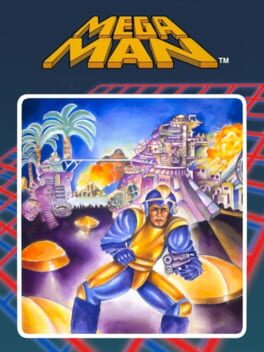KamiRappa
1999
This review contains spoilers
For 2 whole decades, this cabinet has been one of the most illusive in the history of arcade games. But now with the recent discovery of a surviving cabinet and the efforts to dump the game online for everyone to play thanks to Eric Yockey and Jonathan Ross, Um Jammer Lammy NOW! I can finally give my views on this incredible arcade conversion!
At first glance UJL NOW may seem like a straight arcade port of the PS1 classic, but on closer inspection, there is a lot more to it than that. Not only is every stage from the original game present, but you also have different versions of Stage 1 to play, such as 2P co-op, 2P versus, and PaRappa’s version, all of which were famously cut from the PS1 game. Some verses have been slightly tweaked to be made a little easier to commedate for the guitar controller, which is referred to as the Guitar n’ Table. J and C switches are used in place of L and R respectively. I cannot say for sure how it would feel to play with an actual Guitar n’ Table controller (unless I were to actually see the cabinet in person someday), but I can only imagine the extra learning curve it would bring to the UJL experience.
By far, the greatest aspect about UJL NOW! has to go to all the brand new exclusive attract cutscenes (with one or two exceptions) that are not in the original game in any way. These range from Joe Chin commercials to many interviews with the MilkCan members, Katy, Lammy and Ma-San. All of which have plenty to say and help add to the already amazing world building to this series. The dialogue in these cutscenes is especially fun and hilarious to listen to, as is tradition with the PaRappa series. It makes them fun to watch on repeat, if I was in Japan in 1999 and saw this cabinet, I guarantee you I would’ve been hooked on it. In many ways, this conversion like a pseudo sequel to the PS1 game story-wise as it is implied the MilkCan’s Got to Move song became a hit (this game even features a music video for said song), but also content wise because outside of the stages, everything here is brand new content. It just makes the cabinet’s discovery all the more incredible! I strongly recommend everyone to check out this game when you get the chance. You don’t want to miss out on it! Though I would recommend playing the PS1 game first if you haven’t already.
At first glance UJL NOW may seem like a straight arcade port of the PS1 classic, but on closer inspection, there is a lot more to it than that. Not only is every stage from the original game present, but you also have different versions of Stage 1 to play, such as 2P co-op, 2P versus, and PaRappa’s version, all of which were famously cut from the PS1 game. Some verses have been slightly tweaked to be made a little easier to commedate for the guitar controller, which is referred to as the Guitar n’ Table. J and C switches are used in place of L and R respectively. I cannot say for sure how it would feel to play with an actual Guitar n’ Table controller (unless I were to actually see the cabinet in person someday), but I can only imagine the extra learning curve it would bring to the UJL experience.
By far, the greatest aspect about UJL NOW! has to go to all the brand new exclusive attract cutscenes (with one or two exceptions) that are not in the original game in any way. These range from Joe Chin commercials to many interviews with the MilkCan members, Katy, Lammy and Ma-San. All of which have plenty to say and help add to the already amazing world building to this series. The dialogue in these cutscenes is especially fun and hilarious to listen to, as is tradition with the PaRappa series. It makes them fun to watch on repeat, if I was in Japan in 1999 and saw this cabinet, I guarantee you I would’ve been hooked on it. In many ways, this conversion like a pseudo sequel to the PS1 game story-wise as it is implied the MilkCan’s Got to Move song became a hit (this game even features a music video for said song), but also content wise because outside of the stages, everything here is brand new content. It just makes the cabinet’s discovery all the more incredible! I strongly recommend everyone to check out this game when you get the chance. You don’t want to miss out on it! Though I would recommend playing the PS1 game first if you haven’t already.
1998
This review contains spoilers
- N64:
I’ve only played this game just recently and I can immediately see why so many people love this game. It’s one of the most unique and charming platformers I’ve ever played, and it’s great to find another N64 game that’s worth owning! The soundtrack is immediately memorable and super funky, some of the best I’ve heard on the N64 for sure. I especially adore how the game is presented. It has a simple yet timeless visual style and the environments are great. Especially with how the hub world starts off foggy and destroyed, and as you progress, the area restores itself to the peaceful state it once had and Cross-Stitch’s laugh slowly goes away. I do have some gripes with the game however. The difficulty can be very inconsistent at times, and the controls take a lot of time getting used to, especially if you’re playing with the original controller since it actually uses every single button, including L. The bosses also require you to figure out how to beat them which is really annoying since the actual bosses themselves are pathetically easy, minus the infamous Fortress of Fear Boss, which has you climbing to the top while avoiding the monster’s electricity and making sure he doesn’t kick your ball to the bottom. I also find it annoying that you can’t tilt the camera up or down with the C buttons which may not sound ideal but it’s better than the zooming in and out feature which doesn’t help much. I know you can go into first person mode but it’s stand still only so it’s not that helpful unless you’re looking for garibs.
- PS1:
A very admirable attempt to improve on the original game. It looks prettier, the controls are much easier to understand and adjust to, there’s full camera control with the right analog stick (way ahead of most platformers at the time) that you can also tilt up and down making platforming less stressful, and some areas are made more forgiving (ex. Fortress of Fear Boss and Atlantis Bonus), I also dig the new FMV cutscenes and the CD quality soundtrack, even if they are unfortunately much shorter. Sadly this port does have some drawbacks, such as a worse framerate and more sluggish physics, which kind of break certain areas. For me, the biggest loss with this port is the presentation, there are some amazing details from the N64 game that are completely absent from PS1, the biggest one being the hub area music and environment changing as you progress, now it’s just a sunset changing to a blue sky with only the later music playing, however the earlier music can be heard in the level rooms.
- Steam:
A straight HD port of the N64 game, which sounds great except PIKO screwed up on this one. Mainly the sound issues. A lot of sound effects cut off before they finish and lack the reverb effects they had in the original. There are configuration settings but they are hidden in the document folders and there are no in-game settings to adjust them to. There’s no option to switch to the PS1 soundtrack which is kind of disappointing to me personally. The higher framerate settings severely break the game since it was not designed to go any higher than 20fps. Lastly, this release also includes the PS1 port, and the biggest crime is that you cannot turn on analog mode here, meaning you’re stuck moving in 8 directions and rotating the camera left and right with L1 and R1. The only real positives I can give are the widescreen looks excellent and the control scheme doesn’t feel as confusing as it used to. And also it does play just fine for the most part, so it’s not completely broken.
Between the N64 and PS1 game, I don’t think one is significantly better or worse than another, they both have their strengths and weaknesses, and I think they are both worth checking out. The Steam version is only for serious fans or if you have nothing else to play it on. However it does include some additional Glover ROMS, and even some for Glover 2, so it’s at least worth that. I’m kind of sad I never grew up with this game because I probably would’ve loved it as a kid. But as an adult I can still appreciate Glover’s incredible amount of charm and originality and that’s what keeps me coming back to these two games.
I’ve only played this game just recently and I can immediately see why so many people love this game. It’s one of the most unique and charming platformers I’ve ever played, and it’s great to find another N64 game that’s worth owning! The soundtrack is immediately memorable and super funky, some of the best I’ve heard on the N64 for sure. I especially adore how the game is presented. It has a simple yet timeless visual style and the environments are great. Especially with how the hub world starts off foggy and destroyed, and as you progress, the area restores itself to the peaceful state it once had and Cross-Stitch’s laugh slowly goes away. I do have some gripes with the game however. The difficulty can be very inconsistent at times, and the controls take a lot of time getting used to, especially if you’re playing with the original controller since it actually uses every single button, including L. The bosses also require you to figure out how to beat them which is really annoying since the actual bosses themselves are pathetically easy, minus the infamous Fortress of Fear Boss, which has you climbing to the top while avoiding the monster’s electricity and making sure he doesn’t kick your ball to the bottom. I also find it annoying that you can’t tilt the camera up or down with the C buttons which may not sound ideal but it’s better than the zooming in and out feature which doesn’t help much. I know you can go into first person mode but it’s stand still only so it’s not that helpful unless you’re looking for garibs.
- PS1:
A very admirable attempt to improve on the original game. It looks prettier, the controls are much easier to understand and adjust to, there’s full camera control with the right analog stick (way ahead of most platformers at the time) that you can also tilt up and down making platforming less stressful, and some areas are made more forgiving (ex. Fortress of Fear Boss and Atlantis Bonus), I also dig the new FMV cutscenes and the CD quality soundtrack, even if they are unfortunately much shorter. Sadly this port does have some drawbacks, such as a worse framerate and more sluggish physics, which kind of break certain areas. For me, the biggest loss with this port is the presentation, there are some amazing details from the N64 game that are completely absent from PS1, the biggest one being the hub area music and environment changing as you progress, now it’s just a sunset changing to a blue sky with only the later music playing, however the earlier music can be heard in the level rooms.
- Steam:
A straight HD port of the N64 game, which sounds great except PIKO screwed up on this one. Mainly the sound issues. A lot of sound effects cut off before they finish and lack the reverb effects they had in the original. There are configuration settings but they are hidden in the document folders and there are no in-game settings to adjust them to. There’s no option to switch to the PS1 soundtrack which is kind of disappointing to me personally. The higher framerate settings severely break the game since it was not designed to go any higher than 20fps. Lastly, this release also includes the PS1 port, and the biggest crime is that you cannot turn on analog mode here, meaning you’re stuck moving in 8 directions and rotating the camera left and right with L1 and R1. The only real positives I can give are the widescreen looks excellent and the control scheme doesn’t feel as confusing as it used to. And also it does play just fine for the most part, so it’s not completely broken.
Between the N64 and PS1 game, I don’t think one is significantly better or worse than another, they both have their strengths and weaknesses, and I think they are both worth checking out. The Steam version is only for serious fans or if you have nothing else to play it on. However it does include some additional Glover ROMS, and even some for Glover 2, so it’s at least worth that. I’m kind of sad I never grew up with this game because I probably would’ve loved it as a kid. But as an adult I can still appreciate Glover’s incredible amount of charm and originality and that’s what keeps me coming back to these two games.
2003
2010
This review contains spoilers
Of all the DS Sonic games, this was the one I wanted to like the most.
Unfortunately this one takes many steps back from Tush Adventure and goes back to Rush 1’s roots of being a mindless automated boost game with barely any platforming, except this time, there are wisps.
Unlike the real Sonic Colors, this game features two exclusive wisps, burst and void, while removing the hover, frenzy, spike, and cube wisps.
The burst wisp allows you to air jump and void works similar to frenzy, except you can hover around. While the wisps were really fun to use and control, Colors DS is the total opposite. For example, the drill is nearly unusable as your movement is restricted to 4 directions, as opposed to the expected 8 with the d-pad. It makes diagonal movement nearly impossible to pull off smoothly, so your only means is to wiggle the d-pad to get some diagonal movement. The laser wisp doesn’t allow you to stay in place while you aim, so you have to react extremely quickly or else you just wasted the wisp, and wisps do not respawn until you restart the level or die. If you thought the frenzy wisp was bad, then you clearly have not used void, the void is extremely stiff and takes way too long to change directions, which resulted in a number of instances where I touched a hazard by complete accident even when I knew it was there.
And since you can’t cancel wisp powers manually, that also means the flow of gameplay is slowed down tremendously in some instances. So if you wanted to cancel the void or burst wisp in a specific spot, you can’t do that. You have to use up whatever you have left while moving forward.
As for bosses, they are a complete joke, even moreso than the console game. If you know what to do, you can beat most of them in just a few seconds, I’m not joking.
For all this game’s faults, are there any positives? Well yes actually. For one thing, the Chaos Emeralds are once again pretty aimple and straightforward like Rush 1. However instead of finding a special pole and boosting until you teleport. With the exception of the 7th emerald, Colors takes the Sonic 1/CD route and requires you to beat a stage with at least 50 rings. The special stages are also taken from Rush 1, but now you collect colored orbs.
The last special stage can only be accessed through the versus mode in the Game Land (Sonic’s head). You’ll have to race against a CPU and win with 50 rings, that’s easier said than done as the items come at you with no way of avoiding them in a timely manner, which means plenty of springs that will knock you back, your boost being depleted, or dropping all your rings. The versus mode is pretty awful and I cannot imagine anyone getting together to play it.
Probably the worst area in the whole game is Asteroid Coaster, which was one of my favorites in the console game. Now it’s a series of blind hazards that you’ll only be able to dodge via memorization.
For what it’s worth, at least the Nega Mother Wisp boss is pretty good, and is a decent reward for getting all the emeralds.
There are also red rings to collect but given the awkward vertical display where the middle area is cut off by the system itself, making things very disorienting and hard to see, they’re just not fun to collect, and all you get is infinite boost, which doesn’t sound like a good reward to me.
And no, S ranks still give you absolutely nothing and are still just as horrifically strict as the previous two games. Well, except for the bosses and special stages, those can be S ranked with little effort.
Honestly, I’m glad this game was as short and fat free as it is, it’s strictly a Sonic adventure with the only side content being missions which are all the same as each other, grab rings or defeat enemies in a specific time limit. You can beat this game entirely in only about 2-3 hours. Assuming you aren’t going for the red rings or S ranks.
Sonic Colors DS is basically Sonic Rush but without any filler content and the level design isn’t quite as irritatingly cheap (except maybe Asteroid Coaster but even that wasn’t as bad). It’s still bland and forgettable, but has a stellar soundtrack, everything is from the console game but in MIDI format and I really love the tunes on DS. Unfortunately it can’t save this game and I’m kind of sad to end the Rush trilogy on a sour note. I really wanted to like these games, but they do so little to impress me that I just can’t latch on to them the same way I latch on to the PS2 and PS3 games.
I can think of a ton of specific memorable aspects of Sonic Heroes, Shadow, 06, Unleashed and Wii Colors.
Colors DS has a few memorable aspects, such as additional characters that don’t appear in the console game, but that’s mostly it as far as specific moments. If Colors DS wasn’t so automated and had more fun platforming, then I would’ve considered it a great game. It’s almost there, but is held back by some questionable decisions that it’s really hard to recommend. Especially with the recent Sonic Colors Ultimate providing us with a handheld experience of the real game on Switch, giving the DS game even less of a purpose today.
While some may prefer it over its console cousin, to me, this is just another Dimps Sonic game. It’s a one-and-done deal that I’ll never pick up again now that I’ve finished it.
Unfortunately this one takes many steps back from Tush Adventure and goes back to Rush 1’s roots of being a mindless automated boost game with barely any platforming, except this time, there are wisps.
Unlike the real Sonic Colors, this game features two exclusive wisps, burst and void, while removing the hover, frenzy, spike, and cube wisps.
The burst wisp allows you to air jump and void works similar to frenzy, except you can hover around. While the wisps were really fun to use and control, Colors DS is the total opposite. For example, the drill is nearly unusable as your movement is restricted to 4 directions, as opposed to the expected 8 with the d-pad. It makes diagonal movement nearly impossible to pull off smoothly, so your only means is to wiggle the d-pad to get some diagonal movement. The laser wisp doesn’t allow you to stay in place while you aim, so you have to react extremely quickly or else you just wasted the wisp, and wisps do not respawn until you restart the level or die. If you thought the frenzy wisp was bad, then you clearly have not used void, the void is extremely stiff and takes way too long to change directions, which resulted in a number of instances where I touched a hazard by complete accident even when I knew it was there.
And since you can’t cancel wisp powers manually, that also means the flow of gameplay is slowed down tremendously in some instances. So if you wanted to cancel the void or burst wisp in a specific spot, you can’t do that. You have to use up whatever you have left while moving forward.
As for bosses, they are a complete joke, even moreso than the console game. If you know what to do, you can beat most of them in just a few seconds, I’m not joking.
For all this game’s faults, are there any positives? Well yes actually. For one thing, the Chaos Emeralds are once again pretty aimple and straightforward like Rush 1. However instead of finding a special pole and boosting until you teleport. With the exception of the 7th emerald, Colors takes the Sonic 1/CD route and requires you to beat a stage with at least 50 rings. The special stages are also taken from Rush 1, but now you collect colored orbs.
The last special stage can only be accessed through the versus mode in the Game Land (Sonic’s head). You’ll have to race against a CPU and win with 50 rings, that’s easier said than done as the items come at you with no way of avoiding them in a timely manner, which means plenty of springs that will knock you back, your boost being depleted, or dropping all your rings. The versus mode is pretty awful and I cannot imagine anyone getting together to play it.
Probably the worst area in the whole game is Asteroid Coaster, which was one of my favorites in the console game. Now it’s a series of blind hazards that you’ll only be able to dodge via memorization.
For what it’s worth, at least the Nega Mother Wisp boss is pretty good, and is a decent reward for getting all the emeralds.
There are also red rings to collect but given the awkward vertical display where the middle area is cut off by the system itself, making things very disorienting and hard to see, they’re just not fun to collect, and all you get is infinite boost, which doesn’t sound like a good reward to me.
And no, S ranks still give you absolutely nothing and are still just as horrifically strict as the previous two games. Well, except for the bosses and special stages, those can be S ranked with little effort.
Honestly, I’m glad this game was as short and fat free as it is, it’s strictly a Sonic adventure with the only side content being missions which are all the same as each other, grab rings or defeat enemies in a specific time limit. You can beat this game entirely in only about 2-3 hours. Assuming you aren’t going for the red rings or S ranks.
Sonic Colors DS is basically Sonic Rush but without any filler content and the level design isn’t quite as irritatingly cheap (except maybe Asteroid Coaster but even that wasn’t as bad). It’s still bland and forgettable, but has a stellar soundtrack, everything is from the console game but in MIDI format and I really love the tunes on DS. Unfortunately it can’t save this game and I’m kind of sad to end the Rush trilogy on a sour note. I really wanted to like these games, but they do so little to impress me that I just can’t latch on to them the same way I latch on to the PS2 and PS3 games.
I can think of a ton of specific memorable aspects of Sonic Heroes, Shadow, 06, Unleashed and Wii Colors.
Colors DS has a few memorable aspects, such as additional characters that don’t appear in the console game, but that’s mostly it as far as specific moments. If Colors DS wasn’t so automated and had more fun platforming, then I would’ve considered it a great game. It’s almost there, but is held back by some questionable decisions that it’s really hard to recommend. Especially with the recent Sonic Colors Ultimate providing us with a handheld experience of the real game on Switch, giving the DS game even less of a purpose today.
While some may prefer it over its console cousin, to me, this is just another Dimps Sonic game. It’s a one-and-done deal that I’ll never pick up again now that I’ve finished it.
1995
This review contains spoilers
I have a very conflicted relationship with this game. On one hand it’s one of the most beautiful looking and sounding games I’ve ever experienced, the controls are buttery smooth, and the platforming is super tight. There are several moments in the game where you’re greeted with fun platforming challenges that are tough but reasonable enough to where it’s all the more satisfying once you clear them.
On the other hand, the sudden difficulty spikes that come out of nowhere, extremely cryptic hidden cages that basically require a guide to find and are required to access the final level and ending, and the limited lives and continues system that saves alongside your progress, meaning if you get a game over or use up all your continues, all that will stay that way until you either grind for extra lives or, in the case of continues, start a new save since you cannot get any new continues, all make for one of the most stressful and exhausting games I’ve ever played.
To add insult to injury, if you clear the final level and save after that, there’s no way to access it again. So all that hard work is for one end level you can only play once, and that’s it.
If you want your experience to be a little less strenuous, I recommend you use the 99 lives cheat, nobody will blame you anyway, or you could play the GBA or DSiware versions which help to balance the difficulty a little bit better by adding more hit points.
This is the kind of game that I really REALLY want to love, especially as the first game of one of my favorite game franchises, but it’s hard to with some of its horrible design choices.
On the other hand, the sudden difficulty spikes that come out of nowhere, extremely cryptic hidden cages that basically require a guide to find and are required to access the final level and ending, and the limited lives and continues system that saves alongside your progress, meaning if you get a game over or use up all your continues, all that will stay that way until you either grind for extra lives or, in the case of continues, start a new save since you cannot get any new continues, all make for one of the most stressful and exhausting games I’ve ever played.
To add insult to injury, if you clear the final level and save after that, there’s no way to access it again. So all that hard work is for one end level you can only play once, and that’s it.
If you want your experience to be a little less strenuous, I recommend you use the 99 lives cheat, nobody will blame you anyway, or you could play the GBA or DSiware versions which help to balance the difficulty a little bit better by adding more hit points.
This is the kind of game that I really REALLY want to love, especially as the first game of one of my favorite game franchises, but it’s hard to with some of its horrible design choices.
2001
This review contains spoilers
For a Sonic game released on a Nintendo handheld of all things, and one that was outsourced to a different studio, this is one of the better games to replicate the originals with its own modern take on it. My favorite thing about it is that it follows the Sonic 1 design philosophy of prioritizing platforming while reserving speed as a skill reward.
My only downsides are the really badly optimized special stages, which only exist to try and mimic a 3D space but failing miserably, so the depth perception is bad.
The last two zones can be a real pain, especially if you’re new to this game, there are a ton of blind jumps and bottomless pits, honestly it just leaves a poor lasting impression. The Egg Rocket is really cool in concept, it’s one big zone where segments of the level are breaking apart and you have to reach the end of each segment in a time limit, once again, the bad level design is what ruins it. To add insult to injury, the final boss is ridiculously easy, it’s very anticlimactic and you can beat it in less than a minute if you know what you’re doing.
Lastly, this game retains the Sonic 3 save system, as in your progress will not be saves until you beat the boss of an act, even with a Chaos Emerald. I didn’t like it in Sonic 3, and I don’t like it here, it’s a really dated save system and it should’ve just saved after a single act.
I have major gripes, but the overwhelming amount of enjoyment I got from everything else is enough for me to overlook its problems and enjoy the game for what it is. By the way, this is not Sonic 4 and it never will be.
My only downsides are the really badly optimized special stages, which only exist to try and mimic a 3D space but failing miserably, so the depth perception is bad.
The last two zones can be a real pain, especially if you’re new to this game, there are a ton of blind jumps and bottomless pits, honestly it just leaves a poor lasting impression. The Egg Rocket is really cool in concept, it’s one big zone where segments of the level are breaking apart and you have to reach the end of each segment in a time limit, once again, the bad level design is what ruins it. To add insult to injury, the final boss is ridiculously easy, it’s very anticlimactic and you can beat it in less than a minute if you know what you’re doing.
Lastly, this game retains the Sonic 3 save system, as in your progress will not be saves until you beat the boss of an act, even with a Chaos Emerald. I didn’t like it in Sonic 3, and I don’t like it here, it’s a really dated save system and it should’ve just saved after a single act.
I have major gripes, but the overwhelming amount of enjoyment I got from everything else is enough for me to overlook its problems and enjoy the game for what it is. By the way, this is not Sonic 4 and it never will be.
2007
It’s a significant step-up from the forgettable and bland first game, but still of held back by its platforming moments still being dull. Thankfully there’s a lot less blind falls this time, so it is better by default.
The sailing bits, which take up the majority of the game, are honestly the best part. They kind of play like classic arcade shooters in a way, though not nearly as deep as some of those.
The bosses are also a huge improvement too, there’s far more going on and less waiting around. You’re actively attacking the bosses for once.
Lastly, while there are no special stages, the means of getting the emeralds actually is more engaging since it’s primarily about sailing. You explore the ocean to find hidden islands, which in return unlock missions or a chance to grab one of the 7 Sol Emeralds within a mission. As for the Chaos Emeralds, you have to find Johnny in 7 different parts of the ocean to race him for one. For the most part, these are relatively fun, but the 5th and 7th races are just horribly designed, especially when Johnny has a tendency to just outrun you at the last second.
Despite its glaring issues, I can’t ignore the major improvements it makes over the first game, and the new additions like the sailing help to keep the game from being nothing but dull levels where all you do is go fast and that’s it.
I still wouldn’t go as far as to call it a great game by any means, but it’s passable for a handheld Sonic game.
The sailing bits, which take up the majority of the game, are honestly the best part. They kind of play like classic arcade shooters in a way, though not nearly as deep as some of those.
The bosses are also a huge improvement too, there’s far more going on and less waiting around. You’re actively attacking the bosses for once.
Lastly, while there are no special stages, the means of getting the emeralds actually is more engaging since it’s primarily about sailing. You explore the ocean to find hidden islands, which in return unlock missions or a chance to grab one of the 7 Sol Emeralds within a mission. As for the Chaos Emeralds, you have to find Johnny in 7 different parts of the ocean to race him for one. For the most part, these are relatively fun, but the 5th and 7th races are just horribly designed, especially when Johnny has a tendency to just outrun you at the last second.
Despite its glaring issues, I can’t ignore the major improvements it makes over the first game, and the new additions like the sailing help to keep the game from being nothing but dull levels where all you do is go fast and that’s it.
I still wouldn’t go as far as to call it a great game by any means, but it’s passable for a handheld Sonic game.
2012
The textbook example of all style and no substance. The roster is godawful and severely oversized, consisting of echo fighters and characters that feel shoehorned in for the sake of nostalgia bait, regardless of their relevancy to Nintendo’s history, which most of the DLC characters have next to none of. 80+ characters is simply way too much for one fighting game, even if you gradually unlock them as you progress through the game, which is an okay design choice I guess, but doesn’t excuse the number of characters and even a generally bad roster. The AI has also taken a severe beatdown in quality after Brawl and arguably 4 (I haven’t played 4 in forever so I can’t say for sure), the AI does not reacting to its environments appropriately anymore, just look at what happened in the WarioWare stage for example. Compared to Brawl, the difference in AI is noght and day.
The “story” mode is one the most unbalanced and drawn out things I’ve ever played in a game that also has the bonus of feeling like a bad deviantart fanfiction come to life. This game also comes complete with horrible English voice acting and the terrible original scores that it has. Life Light is not a pleasant song to listen to as it sounds like the most stereotypical anime opening, and the menus play it far too much at full volume with no rest. The visuals, while they’re okay, are hampered greatly by the excessive amount of flashing lights and camera shaking that it honestly makes the game really nauseating to look at for a long period of time.
I’m amazed I live in a world where a once great novelty game with integrity in the 2000’s has now devolved into nothing more than a soulless cynical product that insists on being a “”””celebration of all things gaming”””” (Yes that is what the creators actually said, you can’t get more egotistical than that…) when in reality it’s the most blatant attempt at a nostalgia bait game I have ever seen in my life. I recommend that you do not support Smash Ultimate in any capacity, play something that focuses on being a fun well-made game with plenty of care put into it, like Melee or Brawl.
The fact that garbage like this is considered one of the greatest games ever made gives me more of a reason to fear for the future of the gaming industry…
The “story” mode is one the most unbalanced and drawn out things I’ve ever played in a game that also has the bonus of feeling like a bad deviantart fanfiction come to life. This game also comes complete with horrible English voice acting and the terrible original scores that it has. Life Light is not a pleasant song to listen to as it sounds like the most stereotypical anime opening, and the menus play it far too much at full volume with no rest. The visuals, while they’re okay, are hampered greatly by the excessive amount of flashing lights and camera shaking that it honestly makes the game really nauseating to look at for a long period of time.
I’m amazed I live in a world where a once great novelty game with integrity in the 2000’s has now devolved into nothing more than a soulless cynical product that insists on being a “”””celebration of all things gaming”””” (Yes that is what the creators actually said, you can’t get more egotistical than that…) when in reality it’s the most blatant attempt at a nostalgia bait game I have ever seen in my life. I recommend that you do not support Smash Ultimate in any capacity, play something that focuses on being a fun well-made game with plenty of care put into it, like Melee or Brawl.
The fact that garbage like this is considered one of the greatest games ever made gives me more of a reason to fear for the future of the gaming industry…
2011
This is one of those games that has really shaped me as a person. It’s the game that got me into creating stuff and even art. There has never been a better level editor in any other game out there. The game’s main story mode is also filled with memorable stages, characters, music and bosses, but the one thing that really tied it all together was the online. Unfortunately, it’s no longer active due to severe attacks, this shutdown also happened for LBP1, Vita and the PS3 version of 3. Anyway, the online mode for this game was really something special, as levels were being published every day at every minute by some talented and not so talented people. You could earn user made items and costumes, and even play them with your friends. Even building levels on your moon can be done with the help of online friends, it was like a genuine collaborative effort.
This game really does deserve all the praise it gets, and for once, critics knew exactly what they were praising. I doubt we will ever see another game like this again, but I do believe Dreams is a very close second.
This game really does deserve all the praise it gets, and for once, critics knew exactly what they were praising. I doubt we will ever see another game like this again, but I do believe Dreams is a very close second.
1990
1989
A competent attempt to improve on the original game for sure, but time constraints really held this game back from reaching its fullest potential. It’s especially obvious with certain weapons like the Metal Blade, and how the Wily Stages are designed, like the 4th one. This is kind of a one step forward one step back situation. At least the music is top notch stuff.
1987
While I still believe this game is good and holds up a million times more than a majority of the NES’s library, it’s still a rather difficult game with aspects that make it feel less polished compared to its sequels, either because of the series evolving or just dated choices like the lack of any password system.
1996
It’s pretty obvious that Super Mario 64 is one of the most beloved games in the entire series, but even in recent years there are people who have begun to say that it has aged poorly. While I don’t believe they’re wrong for thinking that, especially since there are some dated aspects, I would respectfully disagree with those people. Playing this game without any nostalgia bias, I think Super Mario 64 holds up very well by today’s standards in most areas.
This was one of the first ever collectathon games, where the idea is that you’re given list of collectibles to obtain in order to earn the main items to progress further into the game. Each world has 7 stars with an extra one for collecting 100 coins. Each star encourages the player to explore the level you enter and overcome various challenges or perform certain tasks with certain power-ups. The stars are required to progress to newer rooms in Peach’s Castle, which is the main hub area for the game.
One pf my favorite things about this game is just how acrobatic Mario himself is. At first, he seems to have some jank to his control scheme, particularly when turning around as sometimes he’ll gradually turn as opposed to a quick 180. I did find out that if you stop completely, Mario will snap to whatever direction you tilt the stick towards. With enough practice, you’ll he able to perform a variety of tricks either to look cool, or to even reach areas in ways the designers did not intend, which never fails to be satisfying.
The music is very well done, as expected from Mario. Koji Kondo reprises his role as lead composer for this game and delivers extremely memorable tunes. While this is partially because the soundtrack sometimes pulls a motif with the Bob-Omb Battlefield melody, the ones that don’t like Jolly Roger Bay and Lethal Lava Land are still easy tunes that you won’t forget. My only complaint is that the slide theme is used a little too often, it’s especially disappointing that Tick Tock Clock and Rainbow Ride don’t have their own original tracks, which probably would’ve been amazing, but unfortunately that’s not the world we live in.
Graphically speaking, this game delivers the vibrant wacky world the series is known for. Every level has plenty of set pieces and there’s always something different to look at wherever you go. I really appreciate when the Mario Series would give us unique settings for levels like Wet Dry World. The character models, on the other hand, look rather dated by today’s standards, especially since a lot of models, including Mario himself, are just made from a bunch of spheres as opposed to box-modeling. At the very least though, everyone and everything is well animated, so I have to give credit where credit is due.
What I can’t give credit to is the game’s camera system, which is probably where the game has aged the worst in. While most of the time it does cooperate completely, particularly in open areas, the biggest issue is the fact that it often has a tendency to lock itself out even when there’s nothing preventing it from just rotating. There is nothing more annoying than having that happen when you’re just trying to look at your surroundings. The camera also does the thing where it snaps into 8 directions and not just a smooth rotation. You can also center the camera closely behind Mario’s back with R, but I can’t really think of any instances where this is all that useful. Lastly, the fact that the game kicks you out of a stage after grabbing a star is something I don’t get. Like I’ve had a lot of moments where I’m able to complete two or three star tasks in one sitting, and it’s really stupid that I can’t just grab all of them in that same run. That probably would’ve made the game a lot shorter, but honestly, why sacrifice common sense design for length? Especially since the 100 coin stars don’t kick you out at all.
In conclusion, while I do have my issues with Mario 64, I still believe it is a very well made and fun game that I think any fan of 3D platformers should give a try. Nowadays you can play it through the Mario 3D Collection on the Switch with the bonus of being able to play it on the go.
This was one of the first ever collectathon games, where the idea is that you’re given list of collectibles to obtain in order to earn the main items to progress further into the game. Each world has 7 stars with an extra one for collecting 100 coins. Each star encourages the player to explore the level you enter and overcome various challenges or perform certain tasks with certain power-ups. The stars are required to progress to newer rooms in Peach’s Castle, which is the main hub area for the game.
One pf my favorite things about this game is just how acrobatic Mario himself is. At first, he seems to have some jank to his control scheme, particularly when turning around as sometimes he’ll gradually turn as opposed to a quick 180. I did find out that if you stop completely, Mario will snap to whatever direction you tilt the stick towards. With enough practice, you’ll he able to perform a variety of tricks either to look cool, or to even reach areas in ways the designers did not intend, which never fails to be satisfying.
The music is very well done, as expected from Mario. Koji Kondo reprises his role as lead composer for this game and delivers extremely memorable tunes. While this is partially because the soundtrack sometimes pulls a motif with the Bob-Omb Battlefield melody, the ones that don’t like Jolly Roger Bay and Lethal Lava Land are still easy tunes that you won’t forget. My only complaint is that the slide theme is used a little too often, it’s especially disappointing that Tick Tock Clock and Rainbow Ride don’t have their own original tracks, which probably would’ve been amazing, but unfortunately that’s not the world we live in.
Graphically speaking, this game delivers the vibrant wacky world the series is known for. Every level has plenty of set pieces and there’s always something different to look at wherever you go. I really appreciate when the Mario Series would give us unique settings for levels like Wet Dry World. The character models, on the other hand, look rather dated by today’s standards, especially since a lot of models, including Mario himself, are just made from a bunch of spheres as opposed to box-modeling. At the very least though, everyone and everything is well animated, so I have to give credit where credit is due.
What I can’t give credit to is the game’s camera system, which is probably where the game has aged the worst in. While most of the time it does cooperate completely, particularly in open areas, the biggest issue is the fact that it often has a tendency to lock itself out even when there’s nothing preventing it from just rotating. There is nothing more annoying than having that happen when you’re just trying to look at your surroundings. The camera also does the thing where it snaps into 8 directions and not just a smooth rotation. You can also center the camera closely behind Mario’s back with R, but I can’t really think of any instances where this is all that useful. Lastly, the fact that the game kicks you out of a stage after grabbing a star is something I don’t get. Like I’ve had a lot of moments where I’m able to complete two or three star tasks in one sitting, and it’s really stupid that I can’t just grab all of them in that same run. That probably would’ve made the game a lot shorter, but honestly, why sacrifice common sense design for length? Especially since the 100 coin stars don’t kick you out at all.
In conclusion, while I do have my issues with Mario 64, I still believe it is a very well made and fun game that I think any fan of 3D platformers should give a try. Nowadays you can play it through the Mario 3D Collection on the Switch with the bonus of being able to play it on the go.
